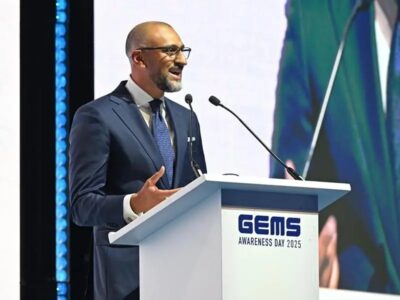The application of game design principles has been used in various industries such as energy, utilities, education, transportation, and water conservation, among others.
Companies have used it to engage and motivate employees, customers, and students, to increase productivity, loyalty, and customer satisfaction.
It is also used to teach new skills or knowledge, improve communication and collaboration, and to make complex tasks fun and engaging.
Such principles have also been implemented in board games, team competitions, online games, smartphone apps, whereby a product is gamified by identifying and encouraging a particular behavior and then giving rewards, levels, and badges, upon completion.
Retail gamified products
Locally here in the UAE, think about ‘travel and earn air miles’ (Etihad or Emirates) for instance, or Etisalat ‘Smiles’, or ‘spend more and get Rewards’ (First Abu Dhabi Bank or Emirates Islamic), or Cashback offers, and so much more with almost every retailer here in the UAE.
Globally, Nissan introduced a product where drivers of Nissan Leaf can collect points for driving in an ecologically friendly manner. Moreover, they could publish this information over social media and compete with their friends.
Or a unique application that allows fans an immersive and addictive space, such as Samsung Nation, Pepsi Soundoff, that use points, levels and badges to drive customer engagement and deepen the relationships they have with the brands they use or aspire to use.
Xerox employs gamification to train managers who collaborate online to complete quests, and Salesforce uses challenges and leader- boards to increase sales.
There are hundreds of gamification tools out there, ranging from something as simple as points, badges, and leaderboards, to AI-based sophisticated reputations systems.
In all the use cases above you will notice one common denominator, which is that all these gamified products are based on B2C (Business to Consumer). It is because game theory by nature is B2C.

Gamification in corporate banking products
How customers interact with financial services is undergoing a revolution. With the new wave of Open Banking, Open Finance, Open API, it is driving endless possibilities toward a truly open gamified ecosystem.
Corporate banks are struggling due to the rise of fintech startups and new disruptive technologies, and achieving performance targets is becoming a challenge for many banks because there are so many different stakeholders involved.
Some think that game theory can help the banks to build products that align with their goals and recover their consumers.
So can gamification be used on corporate products, depends on how we apply the three core ingredients: a sense of competition (achieving mastery), autonomy (being in control), and relatedness (connecting to others, within platform for instance) in developing B2B banking products, given the fact that corporate businesses are a high value, relationship-oriented customer segment.
No time for games
A common practice is to apply gamification internally within the Bank’s sales team by introducing rewards (i.e., higher commissions, top rated, access to perks, benefits, etc.) based on their sales numbers.

An uncommon practice will be when a bank applies at the corporate customer level (SME, MNC, etc.). It is because companies are driven by their bottom line, and they do not have time for games.
Therefore, a typical out-of-the-box gamified product generating rewards or stars would not help.
However, a well-researched product that helps meet and beat their revenue figures and achieve KPIs, has a chance.
No silver bullet
There is no silver bullet and therefore one size does not fit all B2B businesses. Products must be designed carefully to ensure it meets the audience and bank’s business goals such as, customer acquisition, user engagement, retention, brand awareness and recurring incomes.
Identify the type of players and the kind of games they like to play in order to design effective gamification.
Marketing teams should work with businesses, digital, and customer experience functions to provide insights on the emotional aspects of customer behavior and the market relevance of those insights.
So, do we have at our disposal a more effective and enjoyable way of doing business that is relatively free? It’s possible. At least to explore.

Suggestions
For instance, banks can sell a white-labeled gamified product to their corporate customers (eg: RAK Ceramics, Pepsi, etc.), which in turn is used by their customers (B2C).
A product that will help keep their users glued to the platform and ensure sustainable growth for the corporate. Moreover, in-built organic growth tools will lead to new revenue streams.
A few ideas that can help attract corporate customers is by having products that can:
• Help build the client’s retail user base – this will help with new revenue.
• Apply badges using their client’s data – this will help minimize the churn rate.
• Apply ranking using their participation level.
• Regulate ESG ratings based on corporate’s transaction data and assign awards – this will help build market perception and reputation.
• Weekly social content about them on social platforms, or publish interviews with leaders, etc.
The key is to invest in time and resources to research the volatile trends and data that resulted from the games for a similar-sized brand or industry.
Analyse their gamified marketing strategies and choose the right set of tools with solid feedback on Extrinsic and Intrinsic motivational triggers.
Just because everyone likes games, doesn’t mean they would play them.








